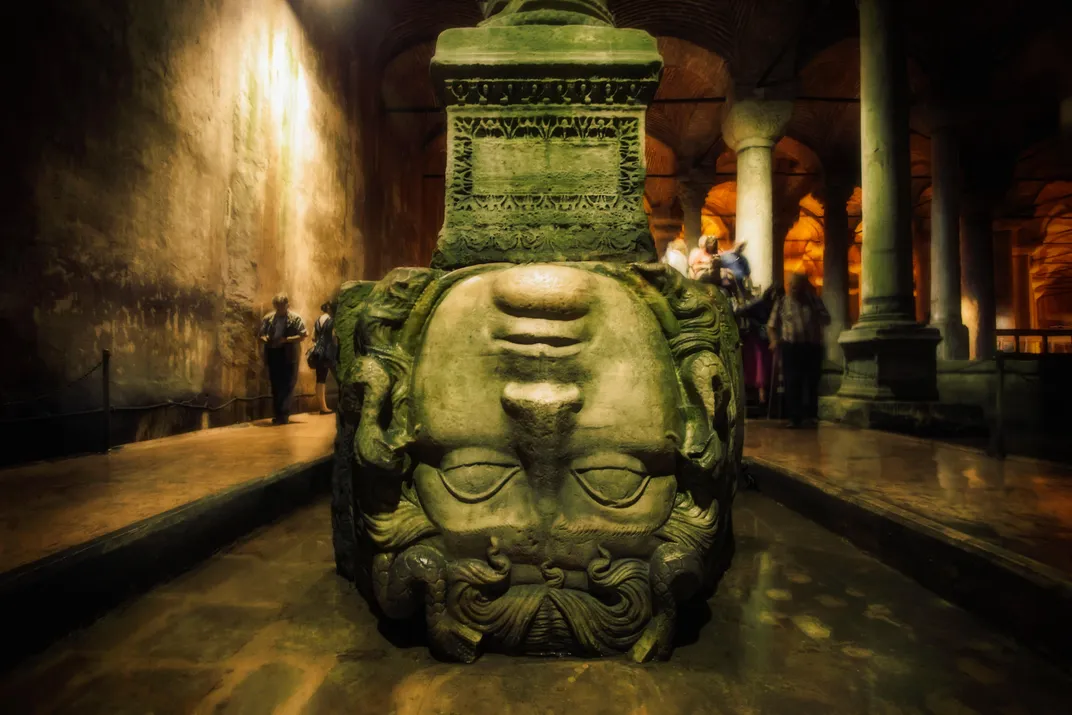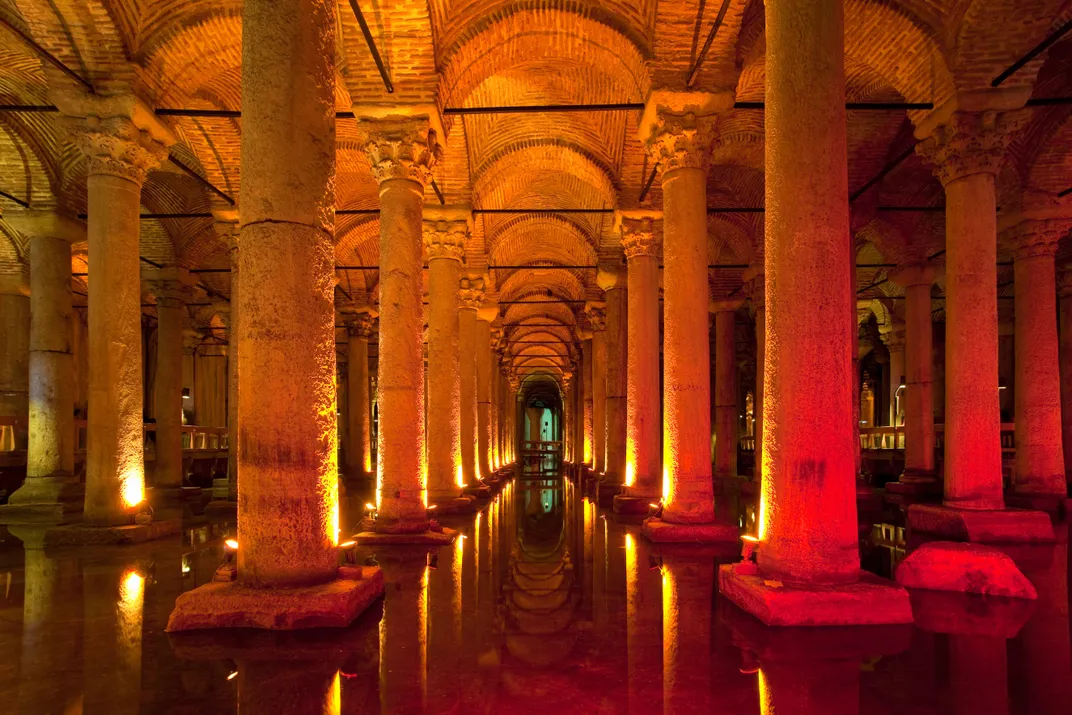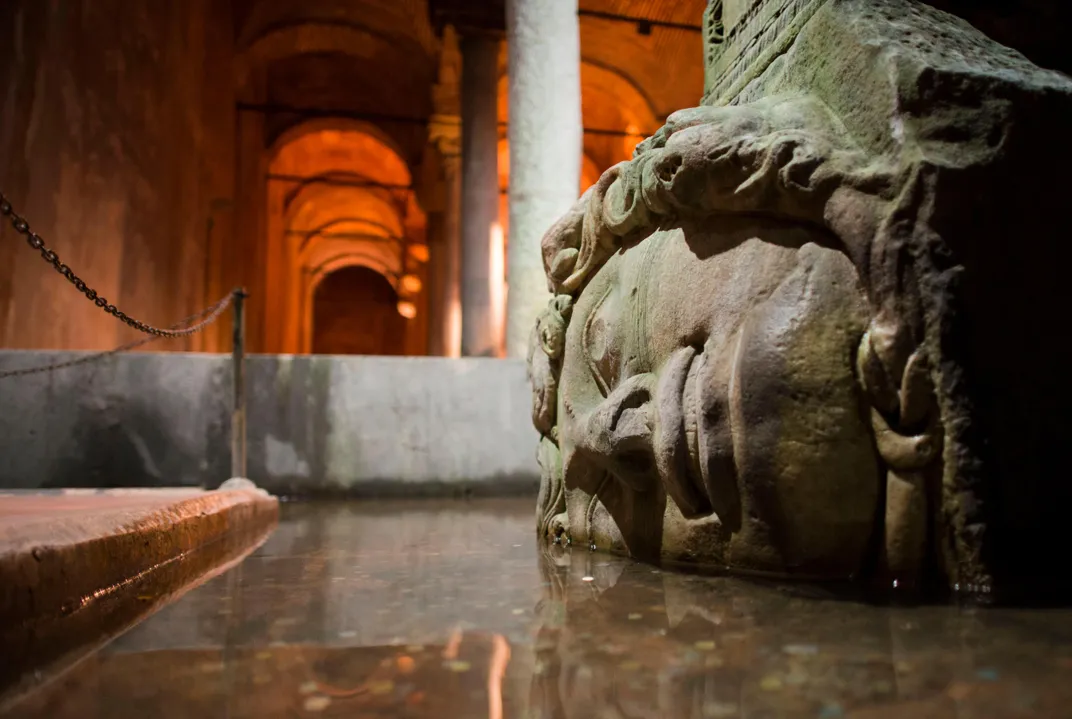Two Eerie Medusa Heads Watch Over Turkey’s Waterways
Why the Greek monster stares out from an ancient cistern in Istanbul
She’ll turn you to stone—or, okay, maybe she won’t this time, but the power of Medusa still emanates from two giant, snake-covered heads in an underground reservoir in Istanbul. Built in the sixth century by the Byzantine emperor Justinian as a place to store fresh water for his palace and nearby buildings, the reservoir was rediscovered a thousand years later when a scholar named Petrus Gyllius visited what was then Constantinople. He’d heard strange stories of locals drawing up water—and even fish—from their basements, and set out to discover what lurked beneath. In 1545, he found the secret: a gigantic subterranean cistern, beautifully carved and replete with the Medusas pictured above. But the incredible structure wasn’t fit for visitors for some time: during the Ottoman Empire, the cistern contained junk—and corpses.
In Greek mythology, Medusa was one of the Gorgon monsters, usually depicted with wings—and, of course, a head of snakes. Because she was the only mortal among the three Gorgons, her killer, Perseus, was able to slay her by cutting off her head. Many versions of the story say that her severed head, which could turn you to stone if you looked at it, became part of the shield Athena carried.
The heads are perhaps the most striking sight in the cistern, whose dark passages were cleaned out in 1985, when the city removed dirty water and tons of mud. An enormous space—roughly the size of two football fields—contains a forest of 336 marble columns holding up the vaulted ceilings, and once held 100,000 tons of water. Today, the place is still dark, damp and a little spooky, although wooden platforms now help visitors walk inside.
Several competing theories explain why one of the Medusa heads is sideways at the base of a column and the other is completely upside-down. The heads may have been removed from an ancient building called the Forum of Constantine, where similar ones have been found. While The Guardian writes that the upside-down head is “proof that Byzantine builders saw Roman relics as little more than reusable rubble,” other historians point to the early Christian practice of putting pagan statues upside-down to make a bold statement about their faith.
But no matter why they’re there, the mysterious Medusa heads are a sight to behold. A Turkish newspaper writes that the ancient spot, often called the Sunken Palace or the Basilica Cistern, is drawing attention from filmmakers around the world as a potential movie set—and it was already used in the 1963 Bond film From Russia with Love.
Planning Your Next Trip?
Explore great travel deals
Smithsonian magazine participates in affiliate link advertising programs. If you purchase an item through these links, we receive a commission.
/https://tf-cmsv2-smithsonianmag-media.s3.amazonaws.com/accounts/headshot/michele-lent-hirsch.jpg)







/https://tf-cmsv2-smithsonianmag-media.s3.amazonaws.com/accounts/headshot/michele-lent-hirsch.jpg)